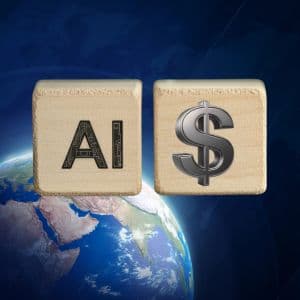The WTO has lifted its 2025 goods trade forecast to levels not seen since before the pandemic as artificial intelligence and tariff-driven imports rewire global 0 Tuesday in Geneva, the trade body said it now expects merchandise trade to grow 2.4% in 2025, a huge jump from the 0.9% projection made in August and a reversal of the 0.2% decline forecast in 1 rise follows a first half of the year marked by heavier AI‑related purchases, 2 racing to beat tariff hikes, and stronger trade between developing 3 organization also cut its longer‑term 4 economists now see 2026 goods trade growth at just 0.5%, down from 1.8%. Services exports are projected to rise 4.6% in 2025 and 4.4% in 2026, far below the 6.8% surge in 5 shift underscores how much of the current boost is tied to near‑term activity, not steady 6 cites AI goods and tariffs for surge According to the WTO, “robust trade in artificial intelligence‑related goods” is at the heart of the jump in 2025 merchandise 7 body listed semiconductors, servers and telecommunications gear as the main drivers of this growth.
Director‑General Ngozi Okonjo‑Iweala said the upswing also reflects stronger trade links between emerging economies and the way governments handled tariff changes earlier this year. “Countries’ measured response to tariff changes in general, the growth potential of AI, as well as increased trade among the rest of the world, particularly among emerging economies, helped ease trade setbacks in 2025,” she 8 comments are about the Trump administration’s sweeping tariffs with significant variation by product, prompting 9 to bring in shipments early to dodge higher 10 scale of AI‑linked commerce is also visible in debt 11 Chase & 12 the amount of debt tied to artificial intelligence reached $1.2 trillion, making it the largest slice of the investment‑grade 13 bank’s analysts wrote that AI companies now account for 14% of the high‑grade market, up from 11.5% in 2020, and have overtaken U.
S. banks’ 11.7% share of the JPMorgan US Liquid Index (JULI). Debt and equity markets chase AI exposure JPMorgan analysts Nathaniel Rosenbaum and Erica Spear identified 75 companies in technology, utilities and capital goods that are most linked to 14 list includes Oracle Corp. , Apple 15 Duke Energy 16 of these firms issue large amounts of debt but maintain low net leverage and high cash 17 group trades at 74 basis points, about 10 tighter than the broader JULI index. “Debt tied to AI companies is growing fast but it trades tight for good reasons,” the analysts wrote, pointing to their strong balance sheets and heavy 18 same firms have seen their equity valuations soar since ChatGPT launched the modern AI era three years ago, attracting investors who want exposure to technology that could reshape the global 19 warned, however, that any earnings setback at the largest tech players could spark a broader selloff because of their high 20 investors are not standing still.
Oracle’s $18 billion bond sale last month, the second‑largest high‑grade deal of the year, drew $88 billion in 21 and private credit firms are also competing to underwrite financings that build out the huge data centers behind 22 your free seat in an exclusive crypto trading community - limited to 1,000 members.
Story Tags

Latest news and analysis from Cryptopolitan



